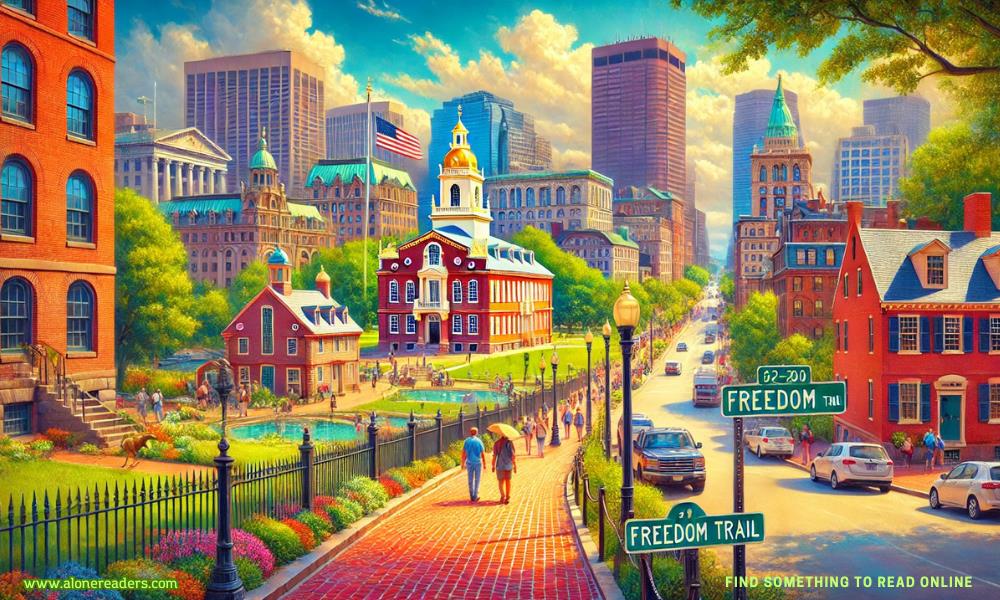
Boston’s Freedom Trail is an immersive journey through America’s rich history, taking travelers through 16 significant landmarks in downtown Boston. This 2.5-mile red-brick trail winds through the city, connecting sites pivotal to America’s revolutionary story. From churches and cemeteries to meeting houses and museums, each site reveals a chapter of Boston’s past. This guide walks you through the Freedom Trail step-by-step, including tips on how to get there, places to stay, delicious food spots, and estimated travel costs.
The trail begins at Boston Common, America’s oldest public park. Stretching across 50 acres, this green space offers scenic beauty along with historic landmarks. A nearby visitor center provides maps and helpful information to kick off your tour.
Massachusetts State House
A short walk from Boston Common leads to the Massachusetts State House, a striking building with its golden dome. Visitors can take free guided tours on weekdays. Make sure to check in advance for tour schedules.
Park Street Church and Granary Burying Ground
Park Street Church is a historic religious site, and nearby lies Granary Burying Ground, resting place of famous patriots like Paul Revere and Samuel Adams. Admission is free for both sites, but donations are welcome.
King’s Chapel and King’s Chapel Burying Ground
This Anglican chapel, founded in 1686, is one of Boston’s oldest, and the adjacent burying ground houses Puritan settlers’ graves. Entry is free, but donations support the site’s maintenance.
Old South Meeting House
Known as the starting point of the Boston Tea Party, this meeting house now serves as a museum. Tickets are around $15 for adults and $8 for children.
Old State House and Boston Massacre Site
The Old State House is one of Boston’s oldest buildings, where significant pre-revolutionary events unfolded. Entrance costs around $12 for adults and $6 for students, with children under 6 free.
Faneuil Hall
A vibrant marketplace and historic meeting hall, Faneuil Hall remains one of Boston’s most visited spots. Nearby, Quincy Market offers plenty of food options, perfect for a quick snack break.
Paul Revere House
As the former home of patriot Paul Revere, this house showcases personal artifacts and gives insight into colonial life. Entry is about $6 for adults and $2 for children.
Old North Church
Famous for the “One if by land, two if by sea” signal, Old North Church played a crucial role in the American Revolution. Entrance fees are around $8 for adults and $6 for children.
Copp’s Hill Burying Ground
Located near North End, this burial ground houses graves of Boston’s early residents, including Puritan ministers. There’s no entrance fee, and the site offers beautiful views over Boston Harbor.
Bunker Hill Monument
Marking the Battle of Bunker Hill, this monument stands tall at 221 feet. Entry to the monument is free, though visitors can climb its 294 steps for an incredible view.
USS Constitution and Museum
End your trail journey at the Charlestown Navy Yard, where the USS Constitution, the oldest commissioned warship afloat, is docked. Admission to the ship is free, but the museum suggests a $10 donation.
Boston’s Freedom Trail is easily accessible by public transportation. The MBTA subway, or “T,” serves many stations along the trail, with the Green, Red, and Blue lines bringing travelers close to Boston Common, where the trail begins.
Boston offers a wide range of accommodations, from budget-friendly hostels to luxury hotels.
Boston is home to numerous dining spots perfect for refueling during your Freedom Trail adventure.
A day exploring the Freedom Trail, including entry fees, food, and transportation, generally costs:
Total estimated daily cost for a mid-range experience: $100–$200 per person
Conclusion
Boston’s Freedom Trail is more than just a historical walk—it’s an enriching experience that brings the Revolutionary War era to life. With well-preserved sites and engaging stories, this self-guided journey offers a memorable look into Boston’s past, ideal for history buffs, families, and solo travelers alike. So lace up your shoes, grab a map, and step back in time along one of America’s most iconic trails!